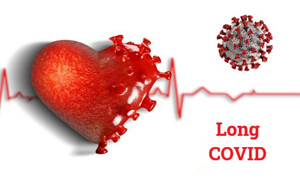Cardiovascular-disorders
JAMA Cardiology: Published on June, 2022
TAKE-HOME MESSAGE
Question: Is
starting cardiac rehabilitation exercise training 2 weeks after sternotomy as
effective and safe as starting 6 weeks after sternotomy?
Findings: In
this assessor-blind, noninferiority, randomized clinical trial of 158 cardiac
surgery patients, starting cardiac...
US Preventive Services Task Force Recommendation Statement (USPSTF): JAMA
NETWORK: Published on August, 2022Cardiovascular disease (CVD) is
highly prevalent and the leading cause of morbidity and mortality. Statins are
used to prevent CVD-associated morbidity and mortality because of their
positive effects on lipid profiles as well as anti-infl...
American Heart Association Journal: Published on February, 2021TAKE HOME MESSAGE:What Is New?To determine the impact of
differences in blood pressure between arms on cardiovascular outcomes (eg,
heart attack, death), data from over 57 000 individuals from 24 studies around
the world were collated into one large dataset and analyzed.Results sugge...
JAMA Network: Published on April, 2022CVD remains a leading cause of morbidity and mortality
globally. Prevention strategies must address all aspects of a patient’s
lifestyle habits, including healthy nutrition, physical activity, smoking
cessation, and stress reduction. When an individual’s risk is sufficiently
high, pharmacologic therapy is o...
Stroke: A Journal of Cerebral Circulation: Published
on April, 2022High blood pressure (BP) is common
after ischemic stroke and associated with a poor functional outcome and
increased mortality. Reducing blood pressure (BP) is a
highly effective strategy for long-term stroke prevention. Despite
overwhelmingly clear evidence from randomized tri...
Hypertension is the most common
non-communicable disease, which persists as a major risk factor of
cardiovascular diseases such as stroke, myocardial Infarction, and heart
failure. Another major problem in clinical practice was the patients' adherence
to treatment, directly related to the number of hypertension pills to be taken.Thus, determini...
BMJ: British Medical
Journal: Published on September, 2022The harmful effects of added sugars on various health
outcomes including cardiometabolic disorders have been extensively studied,
meta-analysed and are currently recognised as major risk factors by public
health authorities. In particular, the World Health Organization recommends
t...
Journal of Hypertension:
Most patients with hypertension
require more than one drug to attain recommended blood pressure (BP) targets.
Initiating therapy with two agents is recommended for patients at high risk of
a cardiovascular event.
Fixed drug combinations are
increasingly used in antihypertensive therapy, so it is necessary to...
Clinical trials in hypertension
have repeatedly shown that adequate blood pressure (BP) control is important
for the prevention of cardiovascular morbidity and mortality. However, most
patients do not achieve target BP levels, and the majority of them require
combination therapy with two or more drugs in order to obtain an adequate BP
redu...
Hypertension is one of the leading
public health challenges worldwide. It is common in both developed and
developing countries.
Essential hypertension is believed
to be a result of complex interaction of genetic and environmental factors.
Increased peripheral resistance is responsible for most of the cases of
essential hypertension....
European Heart Journal:
Emerging as a new epidemic, long COVID or post-acute sequelae
of coronavirus disease 2019 (COVID-19), a condition characterized by the
persistence of COVID-19 symptoms beyond 3 months. The long-term impact of COVID-19 on cardiovascular (CV) health and
mortality is also emerging as a major global concern.
Definit...
European Heart Journal:
Worldwide, survivors of COVID-19
now exceed hundreds of millions, with some reporting incomplete recovery months
beyond the acute illness, a condition commonly referred to as long COVID.
Persistent symptoms of breathlessness, chest pain, fatigue, headaches, brain
fog, and palpitations are a constant reminder of th...













